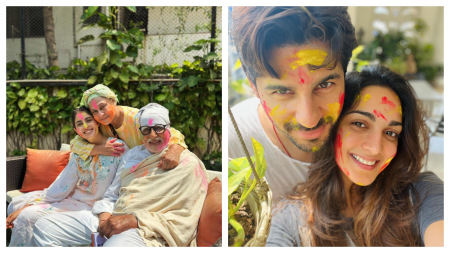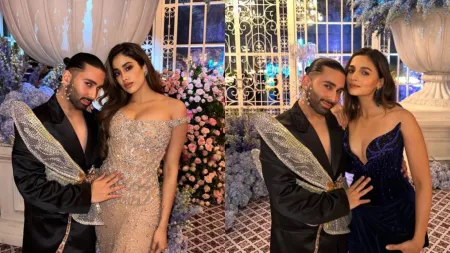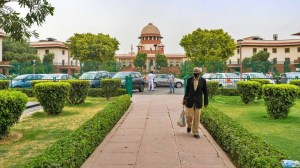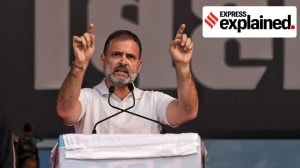- India
- International
A visual Extravaganza
To give the television audience a better viewing experience, the use of special effects/VFX in television shows has increased manifold in the past few months. Screen analyses the trend...
 Everest
Everest
By Priyanka Bhadani
Besides being on their toes to think of new story ideas, the storytellers of television are trying all that they can in order to amp up the look and feel of the shows. In the last few years, much has been written about the production value of television shows going up with serials like Maharakshak Aryan, Everest, Airlines, Yudh, 24, Mahabharat, Hatim, Devon Ke Dev Mahadev etc. To make sure that the amplified investment is put to best use, besides other things, since visuals grab the audience’s attention immediately, it has become almost mandatory for the makers to make it appealing.
With the advent of so many channels (English, non-English) importing content from across the world, the audience now knows what a show with international acclaim looks like. “We had a different visual sense earlier but with the exposure that we have got in recent years, we are more aware now,” says VFX expert Deepak SV, who has worked on historical shows that include Maharana Pratap and is currently working on the upcoming Chakravartin Ashoka Samrat that will go on air in January. “And thus, we are trying to match up with what an international show would look like. Even if the stories are strictly Indian, VFX artistes and the makers are trying to make shows in an international language so that a larger market consumes the content,” he adds.
VFX is an integral part for this new wave of television shows, believes Ajit Thakur, Executive Vice President and General Manager, Life OK that has had some of the most visually appealing stories including Devon Ke Dev Mahadev and The Adventures of Hatim. “Otherwise, how does one present mythological stories or fantasy dramas that are being lapped up by the audience right now? Most of the stories remain the same. The visuals have to be different, something that adds to the story in multiple ways,” he adds.
Thakur recalls the time when the channel wanted to tell the story of Shiva and Devon Ke Dev Mahadev was conceptualised. “We wanted to make it larger than life. Initially, we went as big with the sets as we could have, but it didn’t translate into what we had imagined. It was then that we shot with the chroma screen and applied computer graphics (CG) and the result was out for everybody to see,” he explains.
While many may think that the trend has caught up because of the scaled up budget of TV productions, it is interesting to note that budget has never been a big issue for the makers. The lacunae lies in the unavailability of technicians in the television industry. “The fully functional VFX companies/studio were focussed on doing films and they hardly had time to do television. Even if someone agreed to do an hour long episode, they required a year. But television is a daily medium and we needed everything on a fast track,” remarks Thakur, who thought it best to invest in talents like Hardik Gajjar, who has worked on the special effects of almost all the shows on Life OK that required VFX.
Producer Siddharth Kumar Tewary, who received critical acclaim for his production, Mahabharat on Star Plus that wrapped up two months ago, couldn’t agree more. He says that to telecast 24-minutes episode six days a week was like releasing a VFX heavy film every week. “It made our lives really difficult and all of us have had sleepless nights because of the time needed in creating the episodes,” says Tewary, adding that creating visual effects is not an overnight process. “It takes a lot of pre and post-production time. We created what we imagined, but the timelines were extremely difficult to match,” he says.
In fact, Tewary mentions that many major VFX companies opted out as they couldn’t take the pressure that television brings to the table. “Eventually, we decided to get multiple VFX houses to come in and we split the work amongst different companies as per our deadlines while we took the creative control completely,” says Tewary, who primarily roped in three different VFX companies apart from many other studios on a periodic basis.
Timeline becomes the major issue for the VFX artistes as well. “Unlike an international series like the Game of Thrones that has made the best use of special effects and was shot over a considerable period of time (close to four years for the first season), we don’t have that luxury at all. Even if we start shooting in advance, we get a leeway of not more than three months and then the episodes are telecast on a daily basis, keeping us on our toes,” says Deepak SV.
But then as the industry has started realising the benefits of special effects, it has also taken into considerations the constraints that are there and is working on them.
VFX supervisor and founder of Vertex Volt Hardik Gajjar, who has worked on many popular TV shows made with special effects, says that the industry realises how VFX makes the work easier. He brings to fore an example from Nisha Aur Uske Cousins that is set in Jaipur, but most of the shooting is done in Mumbai with the backdrop created through the help of VFX. “It eases the burden on the team. The budget may not really come down but think about the comfort that it brings,” remarks Gajjar, who creates miniature replicas of Jaipur that is later enlarged with the help of special effects.
He points out that since the industry is experimenting with newer and better ideas, even the bigger VFX companies/studios that were restricted to just films, have started exploring the television medium.
Interestingly, well-known firms like Pixion, Maya Digital etc have started venturing into the television space.
As far as the budget is concerned, Gajjar remarks that it’s not a big issue. “It’s a percentage of the total budget being spent on a show and methods are also devised to bring down the cost,” he adds.
Thakur, however, says that the cost of production is certainly going up because more special effects are being used. However, the budget is different for different shows. “Like, for Mahadev, almost 15 per cent of the total budget goes into VFX, while for Shapath, it’s only 10 per cent. In case of Hatim, since there are big visuals, big scale, horse chases, explosions and a lot more, the budget is much higher — almost 30 per cent,” he says.
Tewary, who spent close to 20 per cent of the total budget on special effects for Mahabharat, believes that budgets can be worked upon. “What is more important is to tell the story with the same grandness as it has been conceived. Imagine what the vishwaroop of Krishna would look like without special effects?” he remarks.
It says it all about the undue importance that VFX has found with the small screen industry!
priyanka.bhadani@expressindia.com
Photos
Apr 25: Latest News
- 01
- 02
- 03
- 04
- 05









































